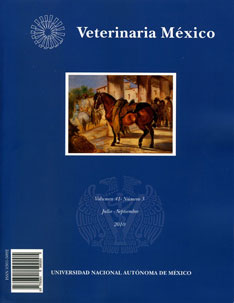Effect of commercial carotene pigments (astaxanthin, cantaxanthin and β-carotene) in juvenile abalone Haliotis rufescens diets on the color of the shell or nacre
Main Article Content
Abstract
With the aim to observe any color effect on the shell or nacre of juvenile red abalone (Haliotis rufescens), three diets were formulated adding carotene pigments (astaxanthin, cantaxanthin and ß-carotene) and one control diet without pigments. Juvenile abalone (n = 504) with a shell length and weight of 5.46 ± 0.87 mm and 0.03 ± 0.16 g, respectively, were utilized. The abalones were randomly distributed in twelve buckets (20 L) connected to a recirculation system under controlled temperature and constant water flow. Each treatment was done in triplicate. After 90 days of experimentation, the organisms fed on diets with inclusion of pigments showed a length growth rate of 53.06 ± 6.91 μm/day and weight of 1.34 ± 0.24 mg, whereas the juveniles fed with the control diet showed a growth rate of 74.93 ± 14.63 μm/day and weighed 2.13 ± 0.40 mg. The formation of shell and color recorded resulted in a minor color change compared to the control diet. However, in spite of these changes the supplementation of pigment at this point is not recommended. Nevertheless, more efforts should be made to research the shell color manipulation.
Article Details
License

Veterinaria México OA by Facultad de Medicina Veterinaria y Zootecnia - Universidad Nacional Autónoma de México is licensed under a Creative Commons Attribution 4.0 International Licence.
Based on a work at http://www.revistas.unam.mx
- All articles in Veterinaria México OA re published under the Creative Commons Attribution 4.0 Unported (CC-BY 4.0). With this license, authors retain copyright but allow any user to share, copy, distribute, transmit, adapt and make commercial use of the work, without needing to provide additional permission as long as appropriate attribution is made to the original author or source.
- By using this license, all Veterinaria México OAarticles meet or exceed all funder and institutional requirements for being considered Open Access.
- Authors cannot use copyrighted material within their article unless that material has also been made available under a similarly liberal license.



